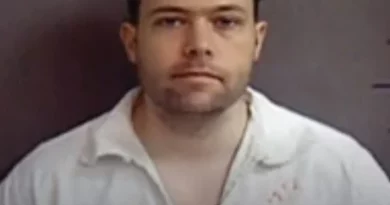The Disappearance of Heidi Planck in Los Angeles California
On October 17, 2021, a normal Sunday in Los Angeles transformed into a mystery that still grips the city. Heidi Planck, a mother and finance professional, moved through an ordinary day that ended with an extraordinary absence. There was no farewell message, no long trail of clues, only a chain of moments that seemed unremarkable until they were examined in reverse. By nightfall her friends and family could not reach her. Within days the city would come to know her name, and a quiet residential routine would become the subject of one of the most discussed missing person cases in recent memory.
The Woman Behind The Headline
Before she became a case number, Heidi was a mother, a colleague, and a friend whose life ran on familiar tracks. She balanced parenting with a demanding job in finance, a field where precision and discretion are standard expectations. Those who knew her remember a direct, energetic style and a habit of keeping commitments. She lived on the west side of Los Angeles, kept close ties with friends, and maintained an active schedule centered around her son, work, and routine errands. Nothing in that profile predicted a disappearance. If anything, it made her sudden absence more alarming because it did not fit the pattern of a person inclined to leave without notice.
The Day Of October 17, 2021
The timeline of that Sunday has been reassembled from messages, sightings, and the rhythms of a usual weekend in Los Angeles. Morning events were ordinary. There were family commitments, a youth sports game, and the kind of mid day movements that are hard to distinguish from any other weekend. As afternoon became evening, the city lights brightened and traffic patterns shifted to the slower flow of a Sunday night. Somewhere within that window, Heidi was seen near a downtown complex known for its modern architecture and high floors with sweeping views. It was here that the small details began to matter in a way they never had before.
A Building That Became A Focus
The downtown high rise drew immediate attention because its secure entries, cameras, and lobby coverage suggested it might hold answers. In a case that begins with so few clear signals, a large residential complex represents both opportunity and challenge. Opportunity because there are cameras, key fobs, guest logs, and staff who may remember faces. Challenge because hundreds of people move through those spaces every day, and a single person can vanish into the vertical maze of elevators, corridors, and parking levels. A dog was found wandering on one of the upper floors that evening, a jarring detail because the animal belonged to Heidi. That discovery anchored the building as a central location in the last verified chapter of her day.
The Dog As An Unlikely Witness
Animals do not give statements, but their presence can establish time and place in a way that few inanimate objects can. The dog found loose on an upper floor turned a high rise into a probable scene rather than a random dot on a map. For investigators, that meant the building was not simply a place someone passed by. It was a space where something happened. Finding a dog in a hallway tells a stark story. Someone entered the building with the animal. At some later moment the animal was loose and unaccompanied. The interval between those points became the first frame of the investigative film.
The Vehicle And The Nearby Streets
Not long after, Heidi’s vehicle was recovered in a garage not far from the building. Los Angeles makes a habit of hiding crucial secrets in plain view, and downtown garages are among the city’s most anonymous places. Cars come and go without ceremony. Tickets print and cameras watch, but the footage is often stored for a limited time and the angles do not always reveal the face of a driver. The discovery of the vehicle suggested that whatever happened did not involve a long drive out of the city that night. It also shifted attention to pedestrian routes, ride shares, and the possibility that someone utilized the network of garages and alleyways that crisscross the downtown grid.
First Hours Of The Investigation
The first hours are the most unforgiving in any disappearance. Detectives have to decide quickly whether they are looking at a walkaway, a voluntary break from routine, an accidental event, or a crime. In Heidi’s case, the discovery of her dog, the location of her vehicle, and the abrupt end to digital contact made a voluntary absence unlikely. Family and friends sounded alarms early because her silence was out of character. Investigators began securing records, requesting video from the building and surrounding businesses, and mapping movements that could be verified with confidence. They also had to work against the clock, because downtown footage can be overwritten or lost as a matter of routine system maintenance.
Why The Building Matters So Much
High rises are controlled environments with layers of signals if those signals can be captured. Electronic access logs can show when residents or guests enter common spaces. Elevators may have internal cameras. Valet stands and loading docks can reveal late night arrivals that bypass the front desk. In a disappearance where the person and an animal are both associated with the same structure, the building becomes a puzzle box. If an incident took place inside, the challenge is to identify where, when, and how. If an incident began inside and ended elsewhere, the critical windows are the loading areas, stairwells, and any point at which a person or an object could be moved without attracting attention.
The Landfill Search And What It Signaled
Weeks later, attention turned to a landfill in northern Los Angeles County, a place linked to the downtown building by the mundane flow of waste collection. A search of such a location is not undertaken lightly. It requires heavy equipment, protective teams, and a precise understanding of collection routes and dates. The very decision to mount that search suggested that investigators had reason to believe that an event at or connected to the building might have resulted in remains or evidence being transported through ordinary refuse channels. Landfill searches are emotionally tough and technically exacting. They also indicate that investigative conclusions had moved beyond a simple missing person scenario and into the territory of a probable crime.
Digital Trails And Forensic Clues
Modern investigations lean heavily on digital records. Phones ping towers. Apps log steps. Entry systems record swipes. Cameras fix moments in a chronology that can be cross referenced with other streams of data. In Heidi’s disappearance, digital trails built the skeleton of a timeline and forensic work aimed to add tissue to those bones. Forensic indicators within a building can include trace biological material, disrupted surfaces, or items out of place that suggest a struggle or an attempt to clean a scene. Even the absence of expected traces can reveal a truth if the context supports it. When investigators say that evidence suggests a person is deceased, they are rarely speaking from a single source. More often they are speaking from a pattern that emerges when several small facts align.
Theories That Compete And Overlap
Public attention produced theories. Some point to personal relationships. Others point to professional context. Still others focus on the setting itself, arguing that a large building can hide both witnesses and suspects in its everyday activity. It is essential to distinguish speculation from substantiated leads. The facts that hold under repeated review are limited and stark. A specific date. A specific part of downtown. A building with confirmed relevance. A dog found loose. A vehicle located nearby. A search redirected to a landfill. From those anchors, multiple storylines can be imagined, but only one can be proven. Responsible coverage keeps the focus on what is known while acknowledging the lines of inquiry that remain open.
The Role Of Family And Community
Cases like this sustain their momentum because families refuse to let them fade. Heidi’s loved ones organized outreach, maintained public attention through media and neighborhood canvassing, and pressed for updates while cooperating with investigators. Communities respond to that persistence. Strangers remember small details and decide to speak after a poster jogs a memory. A concierge recalls an unusual request. A driver checks a date and recalls a fare that seemed off. This is how cold facts warm up. The social network of a city is vast, but it can contract quickly around a single purpose when a story resonates.
Reconstructing The Critical Window
When a person enters a building and the next verified fact is a dog found alone, investigators look hard at the minutes that bracket those events. Did an elevator stop at a floor that matches an access log. Did cameras in a corridor capture two figures where one should have been. Did a service entrance open at a time that matches a gap elsewhere in the timeline. Did a car pull into a garage bay when most residents were already asleep. Reconstructing these moments does not depend on a single clear shot of a face. It depends on a lattice of consistent signals. In a dense urban building, such a lattice can exist even if none of the individual strands is obvious to casual observers.
What Could Still Break The Case
Time does not erase evidence as completely as it once did. Video is backed up in multiple places. Data can be recovered from devices believed to be clean. People who were reluctant to speak can change their minds. Relationships shift. Consciences move. A person who did not realize the value of what they saw can come forward with a detail that fills a gap. The most promising leads in long running cases often emerge from fresh looks at existing material combined with one new fact that reframes the entire sequence. A plate number that once seemed partial becomes decisive when matched against a parking record. A delivery log that looked ordinary reveals a name already present elsewhere in the file.
The Human Cost Of Not Knowing
The phrase missing person sounds clinical. In practice it describes a rolling grief that never lands. Families live in suspended time. They celebrate milestones with a chair unfilled. They measure progress in calls returned and records released rather than in the return of a loved one. For friends and colleagues, the workplace holds reminders that do not fade. A desk in a certain corner. A file labeled with a name that now stands for absence. The wider city feels the story in subtler ways, as residents recognize that even in a place filled with light and attention, someone can step across a threshold and not be seen again.
A City That Remembers
Los Angeles has a long memory when it chooses to exercise it. Murals, vigils, and anniversaries keep names alive. Heidi’s case has remained present because it is unresolved and because it is human. It is about a mother who was expected home on a Sunday night and did not arrive. It is about a building that raises as many questions as it answers. It is about a timeline that narrows to a few minutes and then vanishes into conjecture. The city remembers because the absence has not been explained, and because a clear explanation is the first step toward accountability.
The Work Ahead
The work that remains is both simple and difficult. Keep pressure on the timeline. Reinterview identified witnesses with new questions. Reexamine digital and physical evidence with upgraded tools. Encourage people who hesitated before to come forward now. Continue to focus on the building and the immediate surrounding blocks, because the weight of the facts pulls attention back to that zone. Maintain visibility so that when someone finally decides to speak, they know where to go and who to call. The case does not require a miracle. It requires a credible tip joined to an evidence base that already exists.
Closing Reflection
The disappearance of Heidi Planck on October 17, 2021 in Los Angeles is a story built from calm surfaces and sharp edges. Calm, because the day began like any other. Sharp, because the last verified moments point to a place where routine and danger briefly overlapped. The essential facts are few and solid. A date. A city. A building. A dog. A vehicle. A search that extended beyond city limits. Around those facts stands a family that will not stop asking, a community that continues to care, and investigators who still seek the one piece of truth that will turn a partial story into a complete one. Until that happens, the case remains open in both the official sense and in the public conscience. The city waits, and the search continues.
Discover more from City Towner
Subscribe to get the latest posts sent to your email.




